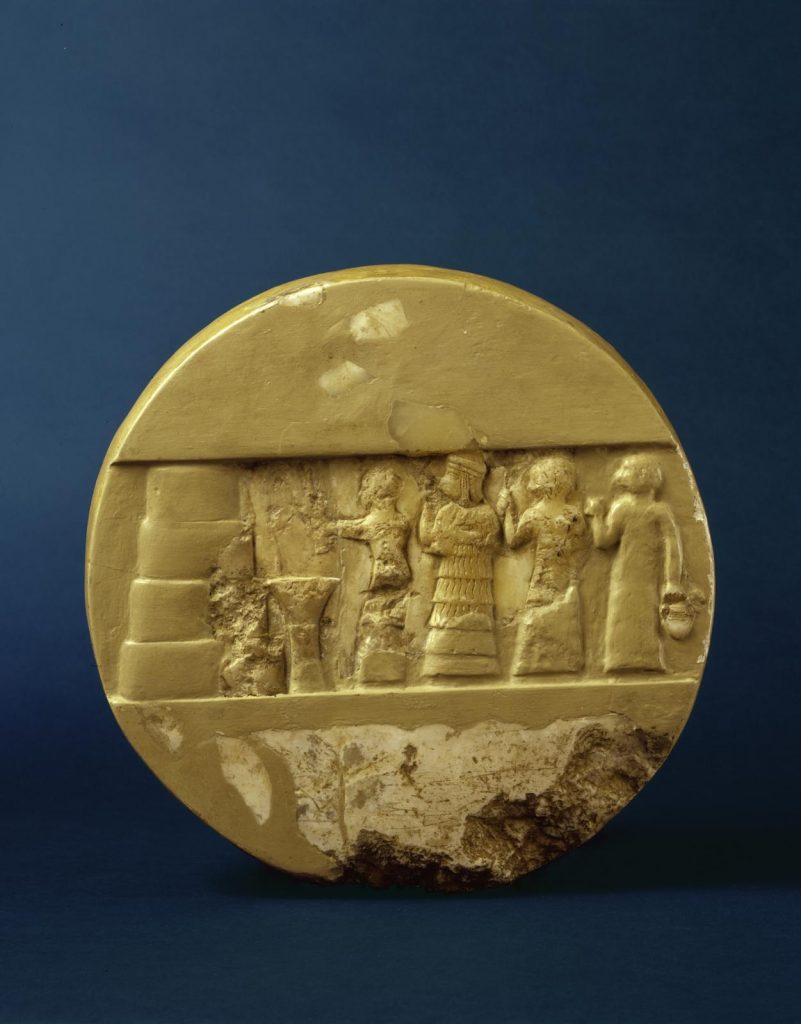From the Archives: Enheduanna–A Surprise from the Ancient World
In every book I write I reach the point where I am so deep in the work that I have to stop writing blog posts and newsletters. I always hope to avoid it. That somehow I’ll be smarter, or faster, or more organized, or just more. This time I’ve managed to avoid hitting the wall for several months by cutting back to one post a month. But the time has come. For the next little while, I’m going to share blog posts from the past, starting with this one from 2019.
I’ll make it up to you in March, when I’m going to run my Women’s History Month interview series no matter what.

Enheduanna is the one in the middle.
Image courtesy of the University of Pennsylvania Museum, British Museum/University Museum Expedition to Ur, Iraq 1926.
Allow me to introduce you to the first author whose name is recorded in history, a WOMAN named Enheduanna (2285-2250 BCE). Enheduanna was the daughter of Sargon the Great of Akkad, ruler of Mesopotamia. Her father appointed her the high priestess of the most important temple in the Sumerian city of Ur. She may have gotten the job thanks to Daddy, but there is no doubt that she earned it. Combining her roles as both priestess and poet, she wrote more than forty liturgical works that were copied and used for almost 2000 years. In those works, she created conventions for psalms and prayers that were used throughout the ancient Middle East and Mediterranean. Her work influenced the poetic forms of the Hebrew Bible, the Homeric hymns of ancient Greece, and the early hymns of the Christian church. (That’s a lot of influence for someone I never heard of until a few days ago.) She also wrote forty-two more personal poems in which she described her feelings about the world she lived in.
She served as high priestess for forty years, despite a coup attempt that drove her temporarily into exile.
Enheduanna was rediscovered as a historic figure in 1927, during British archaeologist Sir. Leonard Wooley’s excavations of Ur. You can’t say she’s been erased from history, but she isn’t exactly a pop culture icon. (1) Yet.
(1) Except among the people who believe that aliens built the pyramids.




